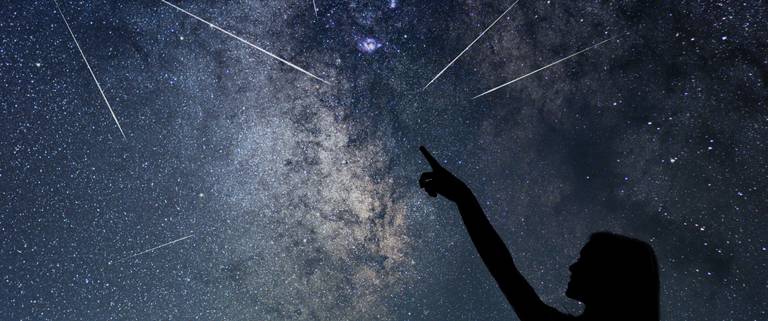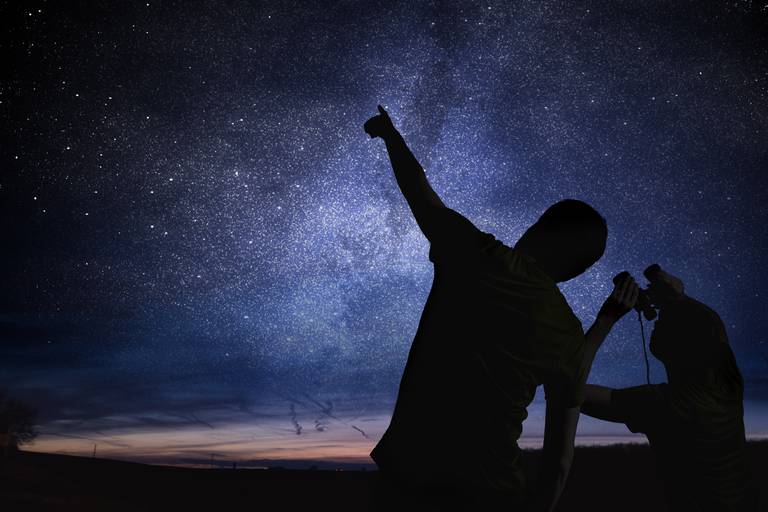A Quick Tour of Five Northern Summer Constellations

Summer months may have the shortest nights, but there is still a multitude of sights to tempt you outside. From Scorpius and Sagittarius in the south to the stars of Cygnus that pass by overhead, there is plenty to see in the summer sky once the sun has set.
Scorpius
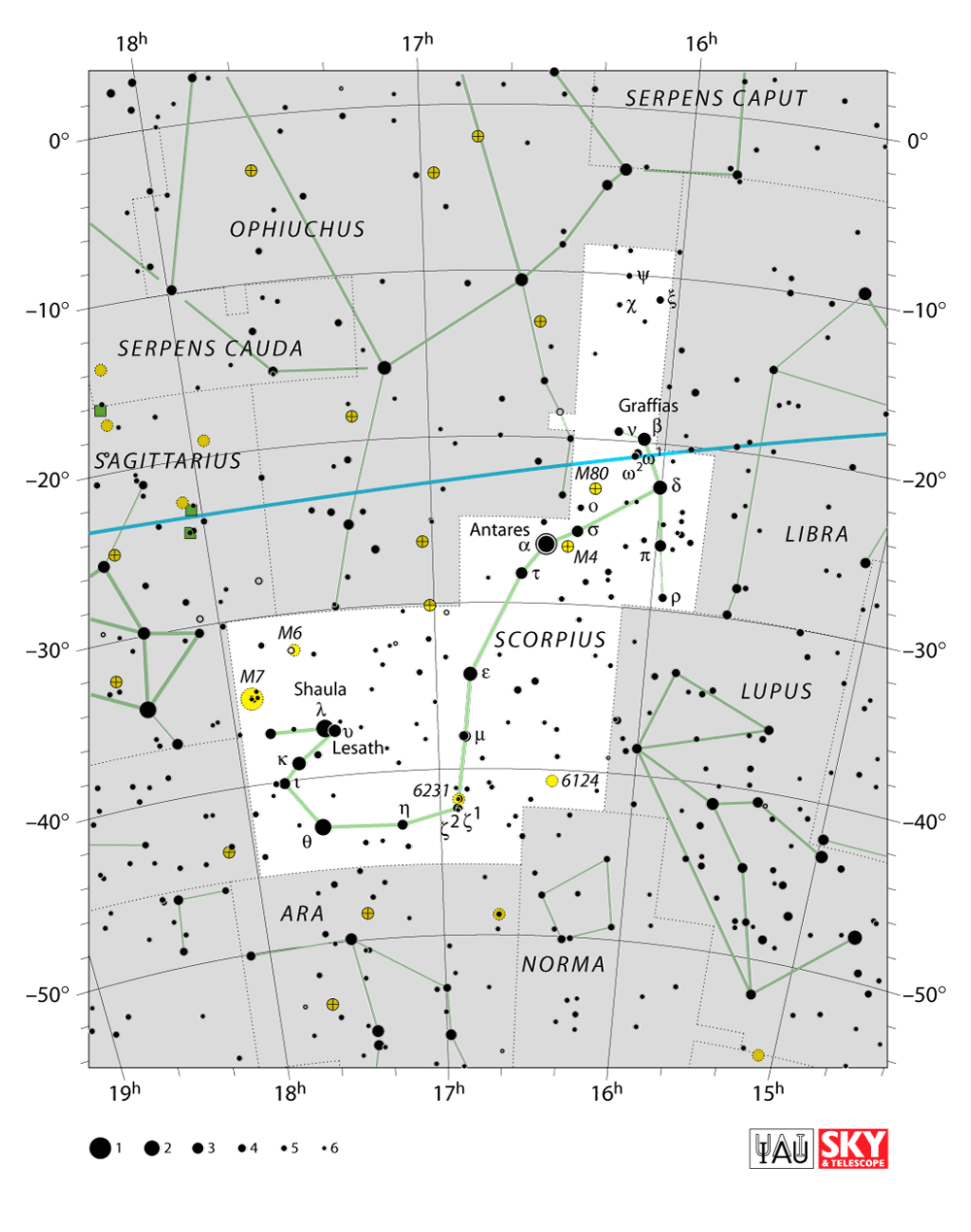
Source
Quick Facts
English Name: The Scorpion
Location: Between latitudes +40° and -90°
Size: 497 square degrees
Neighboring Constellations: Sagittarius, Ophiuchus, Libra, Lupus, Norma. Ara and Corona Australis
Best Seen: 11 PM Local Time, early July
Stars with Planets: There are 18 confirmed planets among the 14 stars within Scorpius. Gliese 667c has the most, with five confirmed planets, while the other stars have one each.
Brightest Star: Alpha Scorpii, better known as Antares. This red supergiant lies roughly 550 light years away and has a small, blue-white companion which can appear greenish in larger scopes. Its name means “rival of Mars” because its color resembles the red planet.
Notable Deep Sky Objects
- Graffias, also known as Beta Scorpii, can be found in the pincers of the scorpion and is an easy, wide double for both binoculars and telescopes. Binoculars will show a white star with a fainter white companion, but a telescope will reveal a third. A low magnification of about 25x will split the brighter star into two. The brighter of the pair is white and about three times brighter than its blue-white companion.
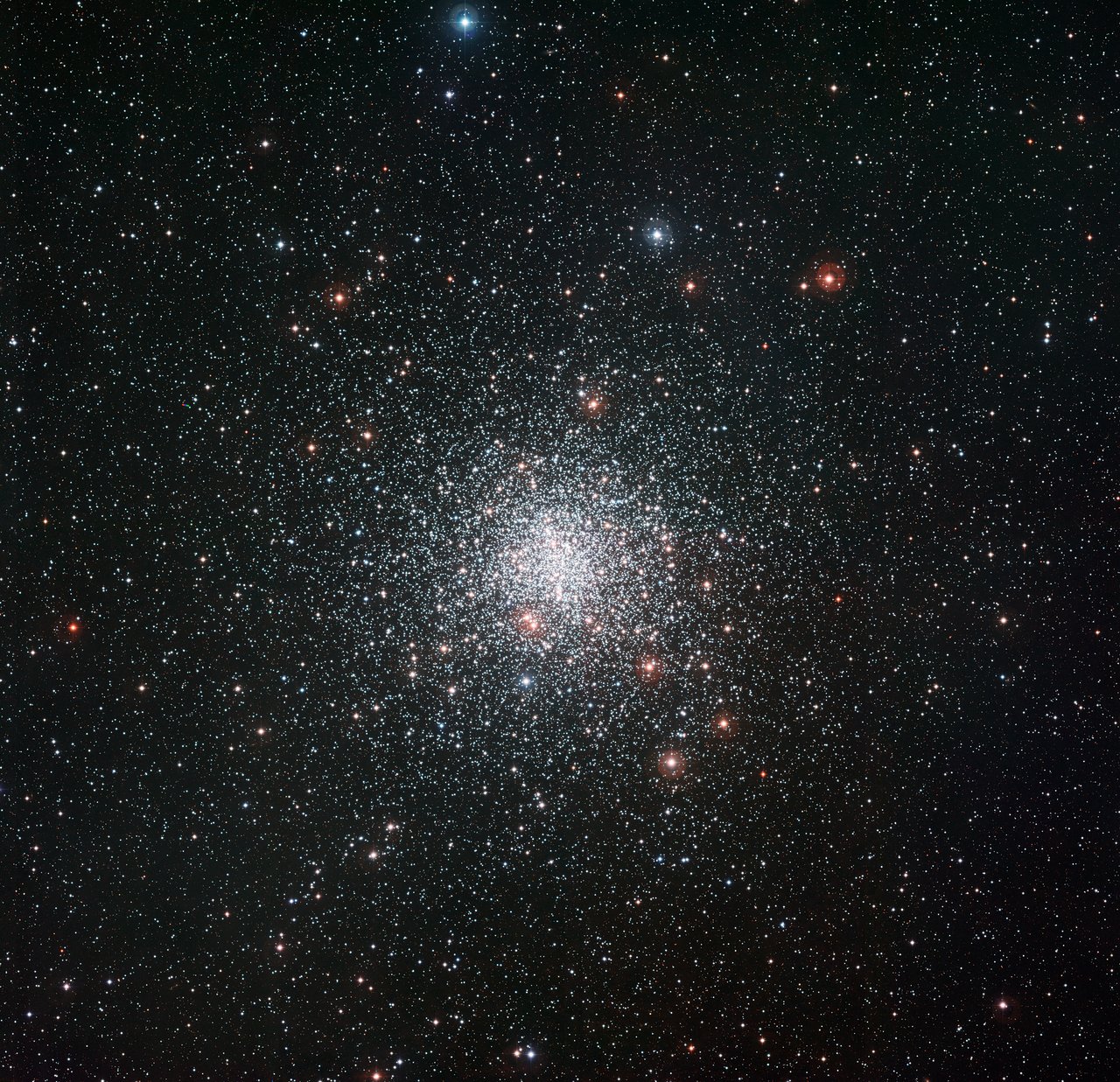
- M4 is the best known globular in Scorpius. Visible with binoculars under the right conditions, it appears to have a central bar of stars when observed telescopically at about 100x.
- M6 is the first of two star clusters that may be visible to the naked eye in Scorpius. Along with its companion, M7, it lies near the stinger of the scorpion, close to the border with Sagittarius. M6 is the smaller and fainter of the two, but probably the prettiest through a telescope. Also known as the Butterfly Cluster, its shape is quite apparent at a low magnification of only 30x.
- M7 is the second naked eye cluster in Scorpius. Larger than M6 and more sparsely scattered, it appears within the same binocular field of view as its neighbor but is the better cluster for binocular observers.
- M80 is the second globular cluster to be found in Scorpius and the faintest of the Messier objects within the constellation. Binoculars might pick it up, but like M4, this is best seen with a scope. You can spot it as a faint, gray smudge at low power through a small scope, but you will need a higher magnification and a larger aperture to see any detail.
Hercules
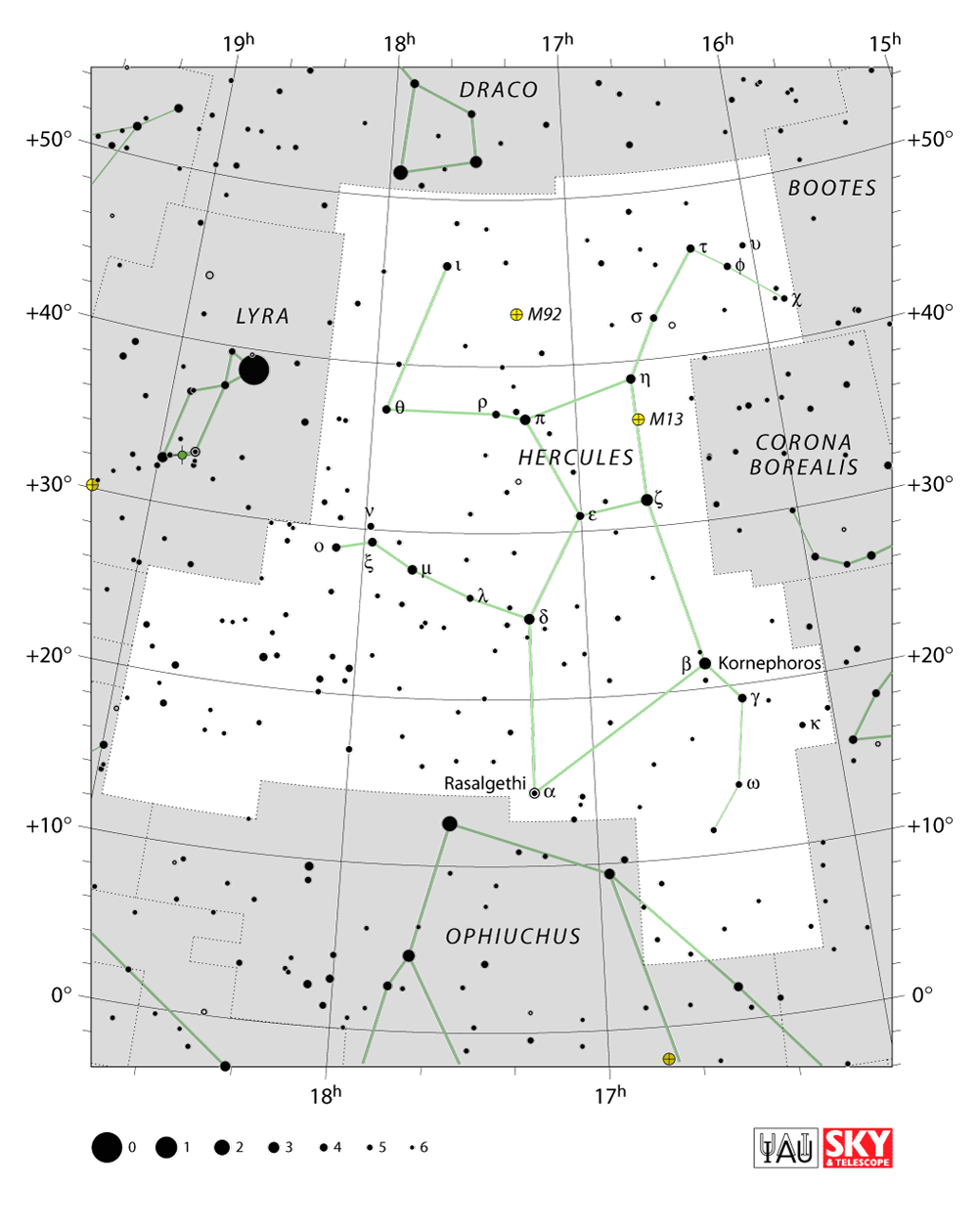
Source
Quick Facts
English Name: Hercules
Location: Between latitudes +90° and -40°
Size: 1,226 square degrees
Neighboring Constellations: Draco, Boötes, Corona Borealis, Serpens Caput, Ophiuchus, Aquila, Sagitta, Vulpecula and Lyra
Best Seen: 11 PM Local Time, mid July
Stars with Planets: Hercules is home to 15 stars and a total of 18 confirmed exoplanets. Of those stars, three have two planets each, including the brightest, 14 Herculis.
Brightest Star: Beta Herculis, or Kornephoros. A yellow giant some 148 light years away, its name means “club bearer.”
Notable Deep Sky Objects
- Rasalgethi or Alpha Herculis, is a pretty double star that can be split at a magnification of about 100x. The primary star appears golden-yellow and four or five times fainter than its pale blue companion. Look for hints of green in the fainter star.
- Kappa Herculis is an optical double, meaning the two stars are not part of the same multiple star system and are only a chance alignment in space. A low magnification of about 30x will split the double into two stars of almost equal brightness. Both will appear golden with the fainter star showing hints of white.
- M13, the Keystone Cluster, is arguably the finest globular cluster easily visible in the northern hemisphere. Binoculars will detect it and a small telescope will show the cluster in all its glory. Take a look at around 100x and you’ll see a splash of light, with chains of stars arcing out from the center of the cluster like the tentacles of a sea anemone.
- M92 is the other Messier globular found in Hercules, but this cluster is not as easy to find as its brighter companion. Again, binoculars will detect it, but a scope with a magnification of about 75x is required to discern any detail.
- NGC 6210, a planetary nebula, is the brightest object of its kind found in the Hercules constellation. You may be able to spot it with smaller scopes, but you will need an aperture of 250mm or greater to appreciate it. Through larger scopes, at a magnification of 100x or more, you should see a tiny, well-defined blue-green oval.
Lyra
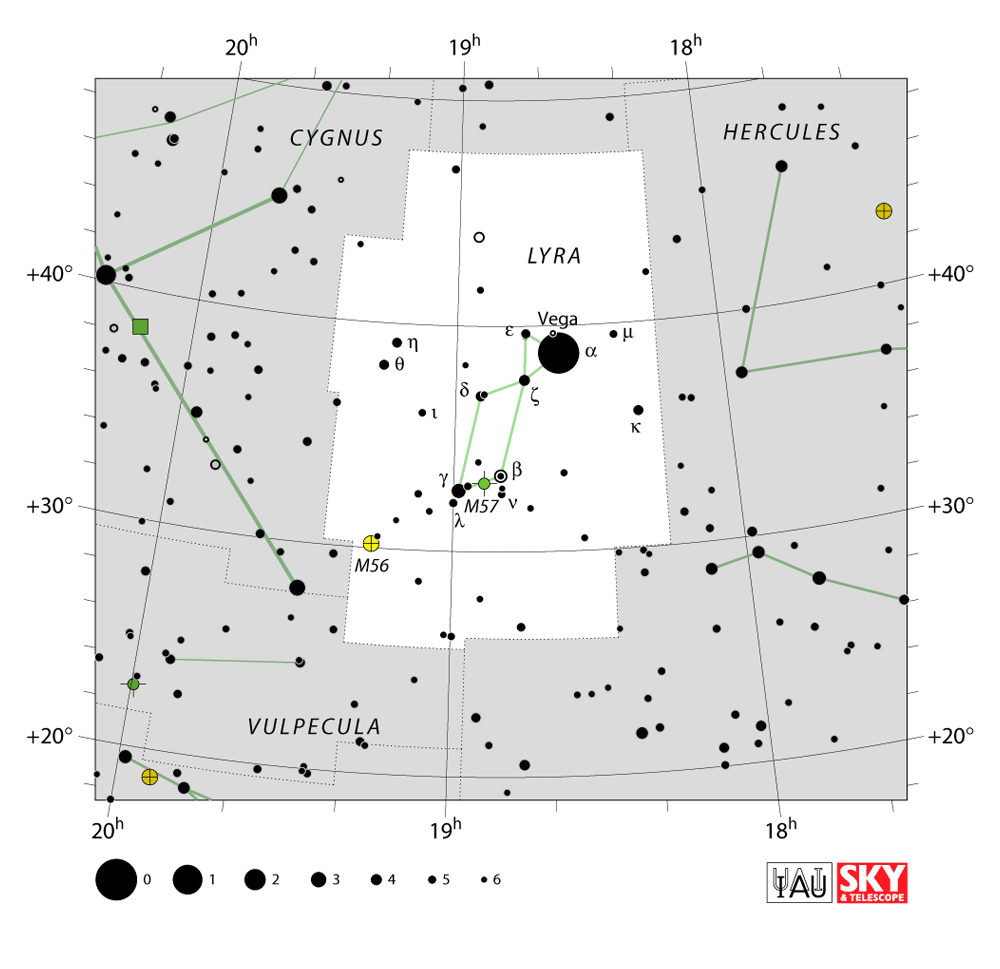
Source
Quick Facts
English Name: The Lyre
Location: Between latitudes +90° and -40°
Size: 286 square degrees
Neighboring Constellations: Draco, Hercules, Vulpecula and Cygnus
Best Seen: 11 PM Local Time, early August
Stars with Planets: There are 21 stars with planets in Lyra, for a total of 36 confirmed planets in the constellation. The brightest star, HD 173416, has one planet while Kepler-20 has the most, with five.
Brightest Star: Vega, or Alpha Lyrae, is the second brightest star in the northern celestial hemisphere (after Arcturus) and the fifth brightest star in the sky overall. At only 25 light years away, it is one of the closest stars to the Sun and is thought to be surrounded by a disc of gas and dust.
Notable Deep Sky Objects
- Espilon Lyrae, the famous “Double Double,” is an outstanding multiple star for anyone with binoculars or a telescope. Sharp-eyed observers might be able to split the star with their eyes, otherwise binoculars will do the trick. Almost any scope, with a magnification of about 100x, will split both stars again, rendering four stars visible. All four stars are white, and of almost equal brightness.
- Zeta Lyrae is an easy split for telescopic observers with a magnification of about 30x. The primary star appears lemony-white and about twice as bright as its white companion.
- M56 is Lyra’s only bright globular cluster. It should be visible with binoculars under dark skies, otherwise a scope may be required to spot it. A small telescope will show it as a faint, misty, circular patch. A scope of 200 mm or larger may be required to reveal its individual stars.
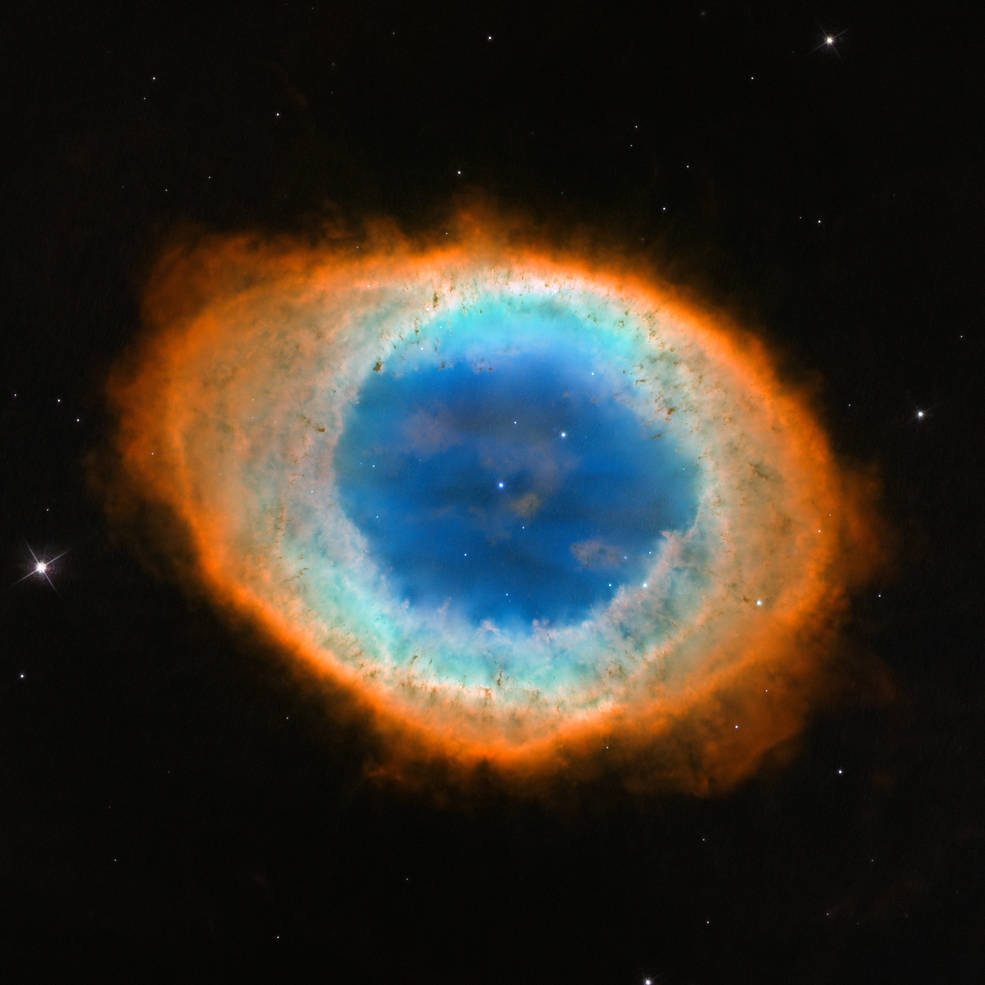
- M57, the Ring Nebula is probably Lyra’s most famous deep sky object. Featured in countless books and magazines, this planetary nebula gives the impression of a small, gray smoke ring in space. A 100 mm scope at about 100x will reveal its shape but you will need a 300 mm scope and excellent conditions to see the dying star at its center.
Sagittarius
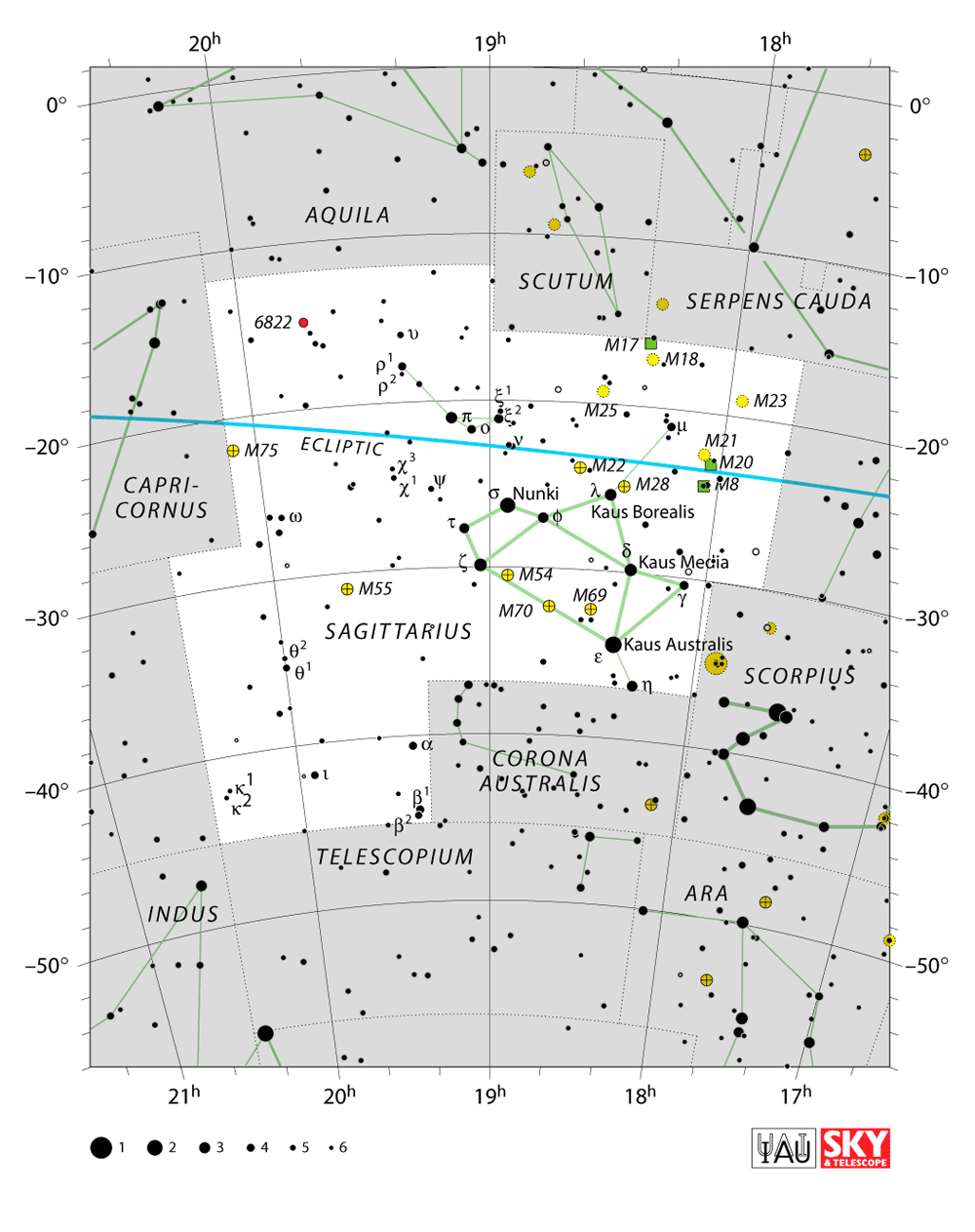
Source
Quick Facts
English Name: The Centaur
Location: Between latitudes +40° and -90°
Size: 867 square degrees
Neighboring Constellations: Aquila, Scutum, Serpens Cauda, Ophiuchus, Scorpius, Corona Australis, Telescopium, Indus, Microscopium and Capricornus
Best Seen: 11 PM Local Time, early August
Stars with Planets: The 22 stars in Sagittarius have a total of 24 confirmed planets among them. Only two of the stars have more than one planet. One, HD 179949, is also the brightest star with a planetary system.
Brightest Star: Epsilon Sagittarii, known as Kaus Australis, is a binary star system some 143 light years away. The secondary star in the system is similar to our Sun and the primary star is seven times larger.
Notable Deep Sky Objects
- The center of our Milky Way galaxy can be found in Sagittarius. Once you find the “teapot” asterism look above the spout for a bright misty patch (the “steam” from the teapot). You’re now looking at the center of our galaxy, some 25,000 light years away.
- The Lagoon Nebula, or Messier 8 (M8) is a large, bright nebula that can be seen with the naked eye from both the northern and southern hemispheres. It’s a fine sight through binoculars and quite beautiful through a telescope. Both will show the nebula as two distinct sections separated by a dark band.
- The Omega Nebula is also known as the Swan Nebula and is number 17 in the Messier catalog. Fainter than the Lagoon, it should be visible with binoculars but is best seen with a telescope. A small scope with only 30x will show the nebula as a swan, with the body being more prominent than the bird’s neck or head.
- The Trifid Nebula, or Messier 20 (M20), is so named because it appears to be divided into three when observed telescopically. It appears within the same binocular or finderscope field of view as the Lagoon, but being smaller and fainter than the Lagoon, will be hard to find under suburban skies.
- M22 is a fine globular cluster that would be much better known if it was situated further north. Visible with the naked eye under dark skies, this cluster looks like a small, circular nebula through a small scope at low power. A magnification of about 100x will start to resolve the cluster’s individual stars.
Cygnus
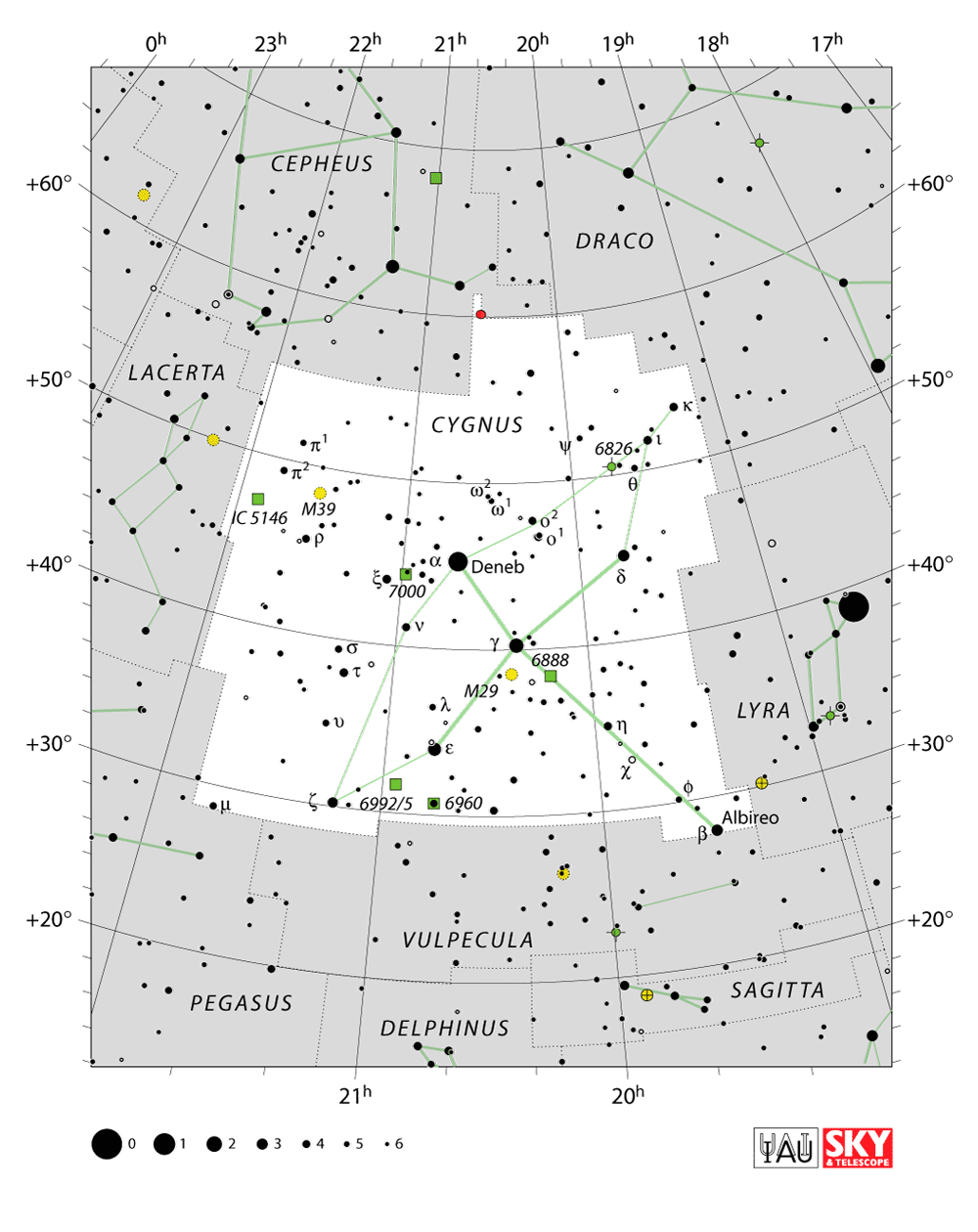
Source
Quick Facts
English Name: The Swan
Location: Between latitudes +90° and -30°
Size: 804 square degrees
Neighboring Constellations: Cepheus, Draco, Lyra, Vulpecula, Pegasus, Lacerta
Best Seen: 11 PM Local Time, early September
Stars with Planets: Thirty-six stars share a total of 61 planets in Cygnus. The brightest star with planets, Gliese 777, has two planets and Kepler-11 has the most, with six.
Brightest Star: Deneb, Alpha Cygni, is one of the most luminous stars known. Its distance is uncertain, but it is thought to be about 2,600 light years away and is estimated to have a luminosity of nearly 200,000 Suns. Its name is derived from the Arabic for “tail” as it marks the tail of the Swan.
Notable Deep Sky Objects
- Albireo, or Beta Cygni, is arguably the finest double star in the northern hemisphere. Any telescope, with only a low magnification of 25x, will easily split this star. The brightest component is a brilliant golden star, with a sapphire blue companion beside it.
- M29 is sometimes known as the Water Tower cluster. It’s the smaller and fainter of two Messier star clusters found within Cygnus, and although it may be spotted with binoculars, you’ll need a telescope to get the most from it. Its shape is reminiscent of the Pleiades or a tiny Big Dipper.
- M39 lies on the edge of naked eye visibility but can be easily found with binoculars. This open star cluster appears to have a triangular shape and is relatively large compared to others like it. You will need a low magnification to fit the entire cluster in your telescope’s field of view.
- The North American Nebula, designated NGC 7000, can be glimpsed with the naked eye under dark skies a large nebula, it is best observed with binoculars and is a favorite of astrophotographers. Its resemblance to the earthbound continent is uncanny.
- The Milky Way stretches the length of the constellation and can be a breathtaking sight under clear, dark skies. No equipment is needed here; simply look up and enjoy the splendor of our own galaxy as it vaults the heavens above us.








